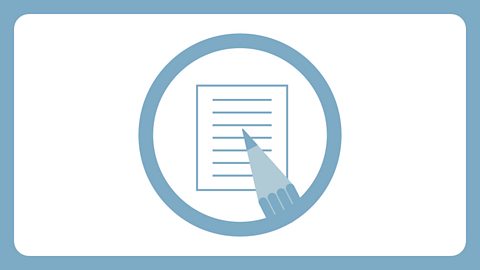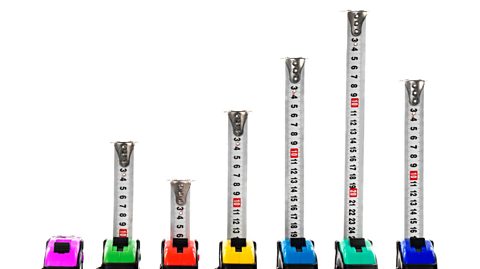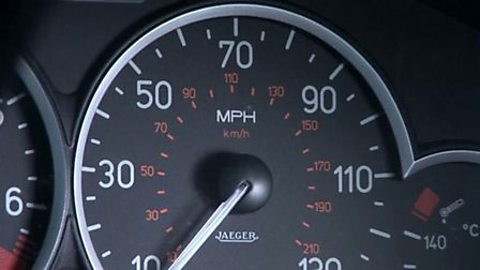Male, black hair and goatee, blue and white striped top: A centimetre's about that much.
Female nurse, black hair, blue and white striped top: A metre's about that much.
Male, grey hair, earring, grey top: If you've got a double decker, you've got to know the height and the width of it.
Because if they send you on a diversion and you've got a low bridge, we have had instances where a double decker's turned into a single decker because blokes have just gone poling down the street and just took the top off the bus.
Female hairdresser, blonde hair, blue dress: Okay so [Indistinct] how much would you like me to take off for you today?
Female hair customer, dark brown hair: A couple of centimetres please.
Female hairdresser, blonde hair, blue dress: A couple of centimetres, so roughly about that much?
Female hair customer, dark brown hair: Yeah.
Female hairdresser, blonde hair, blue dress: Yeah?
Male hairdresser, white shirt: A trim for someone might just be a centimetre, or a trim for someone might be, you know, 7 cm, depending on how often they get it cut.
You've got to make sure, otherwise the result's not gonna be what they asked for.
Male gardener, brown hair, red t-shirt: Well, gardening involves measuring the length of lots of things.
In this instance I'm measuring out a path that's 4 m long, and when I can find it, here we go.
It's very important to get measurements right, 'cause when you're working to a garden plan, if you get it wrong it'll cost you time and money.
A centimetre is made up of ten millimetres and a metre is made up of one hundred centimetres. Length and distance are used everyday for such things like building and athletic sports.
Quick tips for tutors
Length and distance includes
- Strategies and choice of units for measuring small and longer lengths
- Key words used to describe dimensions
- Practical examples of using scales to measure distances
- Activities to practise length and distance measuring
Downloadable Factsheets
Entry 3 - Using different measuring equipment
Summary of types of measuring equipment and choosing the most appropriate for the job.

Entry 3 - Measuring lengths in non-standard units
Summary of how to estimate measurements and when to measure accurately.

Entry 3 - Reading measurements
Summary of selecting the most appropriate measuring equipment and how to read measurements correctly.

Entry 3 - Measuring lengths: Revision notes
Summary comprising ten key facts about measuring length.

Entry 3 - Choosing millimetres, centimetres or metres
Summary of how to choose the most appropriate units for measuring something.

Entry 3 - Measuring lengths in standard metric units
Summary of metric units of measurement and when to use them.

Level 1 - Converting between metric units on length
Summary of how to convert centimetres to millimetres and centimetres to metres.

Level 1 - Measuring lengths
Summary comprising definition of length and metric units of measurement.

Level 1 - Using scales 1
Summary of using scales on a map to find actual distances.

Level 1 - Using scales 2
Summary of using scales on a map to find actual distances.

Level 1 - Reading scales when measuring lengths
How to read scales on a ruler or tape measure.

Level 1 - Using distance tables
Summary of how to read a distance table to find the distance between two places.

Level 1 - Measuring lengths key words
Summary of key words relating to measuring length in metric units.

Downloadable Worksheets
Entry 1 & 2 - Measuring length
An activity in matching objects to measurements.

Entry 3 - Estimating and measuring lengths
Summary of metric units of measurement and when to use them.

Entry 3 - Estimating heights and lengths
Exercise in estimating the height and length of familiar objects.

Entry 3 - Working out lengths
Exercise in working out lengths using division and multiplication.

Entry 3 - Reading and writing lengths
Exercise in measuring and writing lengths, including starting from zero.

Entry 3 - Making tangram shapes
Exercise in making shapes using seven pieces of a tangram, including tangram information sheet.

Entry 3 - Working out postal charges
Exercise in working out postal category of various items, plus information sheet.

Level 1 - Choosing units and instruments to measure length
Exercise in choosing the right units and instruments for measuring the length of a range of everyday objects.

Level 1 - Reading distance tables
Exercise in using distance tables.

Level 1 - Practice using scales 1
Exercise in using scales to covert distance on a map to total journey length.

Level 1 - Practice using scales 2
Further exercise in using scales to covert distance on a map to total journey length.



